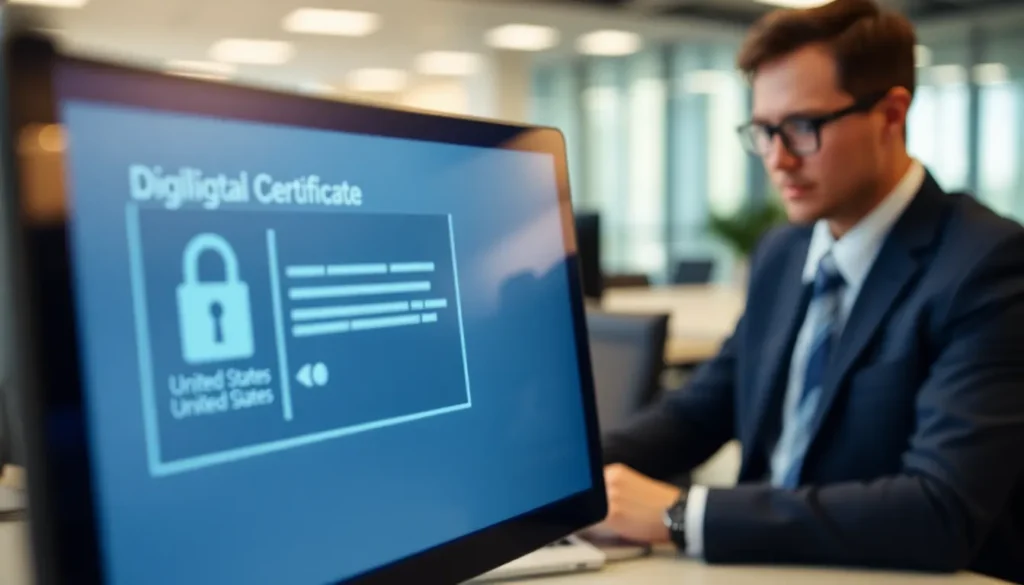Table of Contents
ToggleIn today’s digital jungle, where cyber predators lurk behind every click, securing your online accounts is more crucial than ever. Imagine leaving your front door wide open while you take a leisurely stroll—sounds ridiculous, right? Yet many people treat their online security like an all-you-can-eat buffet, leaving passwords exposed and ripe for the picking.
Overview of Secure Login
Secure login mechanisms play a crucial role in protecting online accounts. Authentication methods ensure that only authorized users gain access to sensitive information. Passwords form the foundation of secure login practices, yet weak passwords pose significant risks. Implementing strong, unique passwords reduces vulnerability to cyber threats.
Two-factor authentication (2FA) enhances security by requiring additional verification. This approach involves something the user knows, like a password, combined with something the user possesses, such as a smartphone for receiving a code. According to a study by IBM, using 2FA can prevent up to 90% of unauthorized account access.
Biometric authentication is an emerging trend, offering a higher level of security. Fingerprints, facial recognition, and iris scans provide unique identifiers that are difficult to replicate. Companies adopting biometric systems have reported a decrease in fraud incidents, demonstrating their effectiveness in enhancing login security.
Regular password updates contribute to secure login practices. Users should change their passwords every three to six months to maintain account integrity. Applying a password manager simplifies this process and encourages the use of complex passwords across multiple accounts.
Education about phishing scams forms another critical element of secure login strategies. Users informed about deceptive tactics are less likely to fall victim to these attacks. Training programs can spotlight the importance of verifying email sources and avoiding suspicious links.
Overall, secure login practices combine various methods to fortify online accounts. By using strong passwords, enabling 2FA, exploring biometric options, updating passwords regularly, and educating users, individuals increase their defenses against cyber threats.
Importance of Secure Login

Secure login practices play a critical role in safeguarding online accounts against cyber threats. Protecting user data and preventing unauthorized access form the foundation of effective security measures.
Protecting User Data
User data includes sensitive information such as passwords, financial details, and personal identifiers. Strong authentication methods ensure that only authorized individuals access this information. Encryption protects data during transmission, reducing the risk of interception. Implementing secure login practices, like two-factor authentication, adds an extra level of security, making it difficult for cybercriminals to exploit vulnerabilities. Regular education about potential threats, like phishing attacks, empowers users to recognize and avoid risks. Overall, prioritizing secure login methods is essential in preserving user data and maintaining trust in digital platforms.
Preventing Unauthorized Access
Unauthorized access can result in financial loss, identity theft, and significant disruptions for individuals and organizations. Using unique, complex passwords for each account significantly reduces the likelihood of unauthorized access. Enabling two-factor authentication can thwart up to 90% of intrusions. Regularly updating passwords and utilizing password managers further strengthen defenses against breaches. User awareness regarding common cyber threats serves as a safeguard against attacks. Ultimately, adopting comprehensive secure login strategies effectively prevents unauthorized access and protects sensitive information.
Best Practices for Secure Login
Implementing secure login practices is essential for protecting online accounts from cyber threats. Following best practices can significantly reduce vulnerabilities.
Strong Password Guidelines
Creating strong passwords is fundamental to secure login. Users should select passwords that are at least 12 characters long, combining uppercase letters, lowercase letters, numbers, and symbols. Avoiding common words or personal information enhances password strength. Changing passwords regularly, ideally every three to six months, further mitigates risks. Using a password manager can simplify the process by generating and storing complex passwords. Users benefit from ensuring that each account utilizes a unique password to prevent multiple account breaches during a single compromise.
Multi-Factor Authentication
Multi-factor authentication (MFA) provides an additional security layer beyond passwords. Implementing MFA requires a second form of verification, such as a text message code or biometric scan. This method can block up to 90% of unauthorized access attempts. Users find that enabling MFA not only adds security but also fosters trust in online transactions. Many platforms now offer this option, making it easy to set up. Prioritizing MFA significantly enhances overall account protection against potential threats.
Regular Security Updates
Regular security updates safeguard devices and accounts from emerging threats. Users should enable automatic updates for software and applications to ensure they have the latest protections. Staying informed about new vulnerabilities is crucial, as attackers often exploit outdated systems. Regularly reviewing account settings can also identify areas needing improvement. By keeping systems updated, users maintain robust defenses against cyber threats. Additionally, educating oneself on recent security practices strengthens overall security awareness.
Common Challenges and Solutions
Securing online accounts presents various challenges. Addressing them leads to a more robust security environment.
User Awareness and Education
Users often underestimate the importance of security practices. Educating them about phishing attacks and social engineering scams increases vigilance. Regular training and awareness programs help reinforce safe online behaviors. Many organizations implement workshops or seminars to improve understanding. Providing easily accessible resources, like videos and articles, enhances knowledge retention. Social media campaigns also raise awareness at a broader level. Moreover, engaging users through quizzes or interactive sessions makes learning enjoyable. With consistent education, individuals become more equipped to recognize potential threats.
Technical Barriers
Technical obstacles can hinder the adoption of secure login methods. Some users find multi-factor authentication complex or time-consuming. Simplifying the setup process encourages more individuals to enable it. Compatibility issues with devices may also pose challenges. Ensuring that a wide range of devices support secure authentication solutions enhances user experience. Additionally, organizations can fortify their systems by integrating user-friendly password managers. Offering clear instructions for technical implementations reduces frustration. To increase safety, software updates should occur frequently to address vulnerabilities. Streamlining the security process fosters a culture of safe online behavior, ultimately protecting digital assets.
Future Trends in Secure Login
Emerging trends in secure login reflect the evolving landscape of digital security. Cloud-based authentication solutions are gaining traction, providing flexibility while enhancing security features. These services leverage multi-factor authentication, allowing users to verify their identity through various channels, including biometrics or one-time codes sent to mobile devices.
Passwordless authentication options are also on the rise. This method eliminates passwords entirely, reducing the risk of password-related breaches. By utilizing technologies like biometrics or hardware tokens, users experience both convenience and heightened security.
Artificial intelligence plays a vital role in future secure login methods. Machine learning algorithms analyze user behavior to detect anomalies and prevent unauthorized access. Enhanced risk assessment during login processes adds a significant layer of protection against potential threats.
Decentralized identity solutions are emerging as well. These innovations enable users to control their personal data and verify their identities without a central authority. Such systems increase privacy and trust in online interactions.
Regulatory changes are influencing secure login measures too. New policies often emphasize user consent and data protection, prompting organizations to adopt more stringent security protocols. Compliance with these regulations enhances consumer confidence in online transactions.
Increased awareness of cybersecurity threats drives the adoption of secure login practices. Users are now prioritizing security over convenience, leading to greater acceptance of advanced authentication methods. Engaging user interfaces continue to evolve, making secure processes more intuitive while maintaining high security standards.
Organizations should prioritize the integration of these trends into their security strategies. Future-proofing login methods ensures enhanced protection against increasingly sophisticated cyber threats. The evolution of secure login reflects the need for robust systems that adapt to the dynamic nature of digital security challenges.
Securing online accounts is more crucial than ever in today’s digital landscape. By implementing strong passwords and multi-factor authentication users can significantly reduce their risk of falling victim to cyber threats. Embracing innovative solutions like biometric authentication and passwordless methods not only enhances security but also simplifies the user experience.
Organizations must stay ahead of emerging trends and regulatory changes to protect user data effectively. As awareness of cybersecurity grows users are becoming more proactive about their security practices. Adopting these strategies will not only safeguard personal information but also foster a culture of security that benefits everyone in the digital space.







